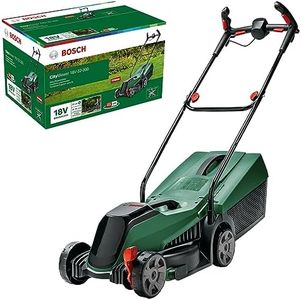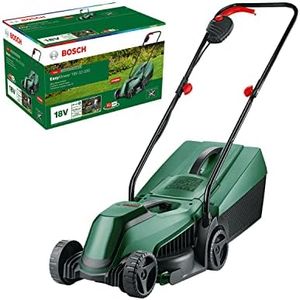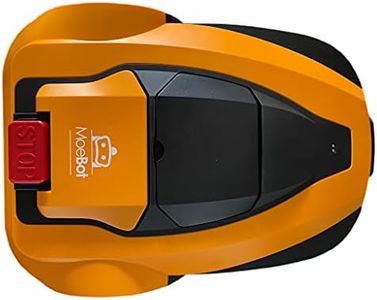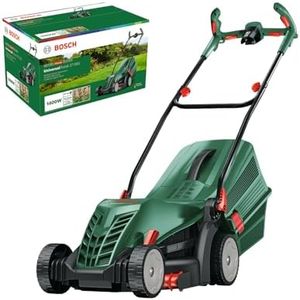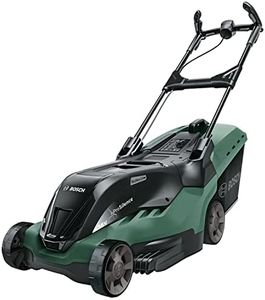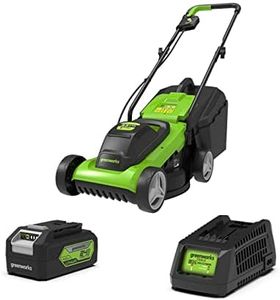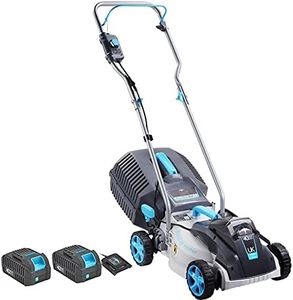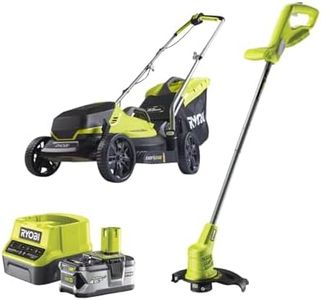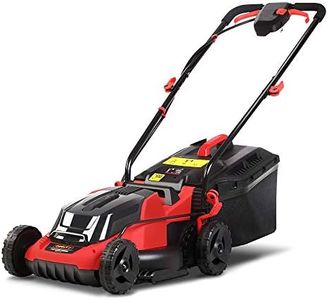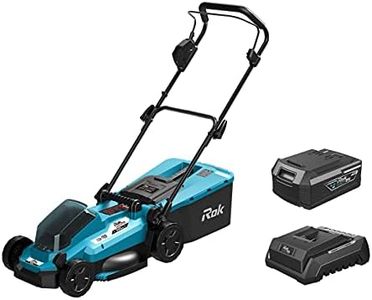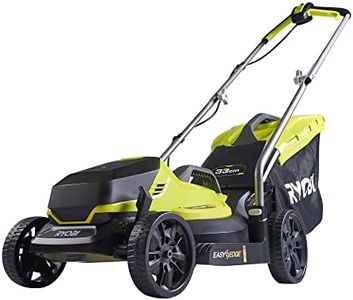We Use CookiesWe use cookies to enhance the security, performance,
functionality and for analytical and promotional activities. By continuing to browse this site you
are agreeing to our privacy policy
10 Best Electric Lawn Mower
From leading brands and best sellers available on the web.Buying Guide for the Best Electric Lawn Mower
Choosing the right electric lawn mower starts with understanding your lawn’s size, terrain, and the type of grass you have. Electric mowers are popular for being quieter, lighter, and easier to maintain than gas-powered models, but finding your best fit means considering how much power, convenience, and cutting ability you actually need. Focus on the specs that match your yard, your routine, and your physical comfort. The right mower will make lawn care easy and maybe even enjoyable.Power Source (Corded vs Cordless)An electric lawn mower can be corded, which means it plugs into an outlet, or cordless, which uses a rechargeable battery. Corded mowers are best if you have a small yard within reach of a power socket and don’t mind managing an extension cord, while cordless mowers are excellent for more freedom of movement and medium-sized yards. When choosing, think about how far you’ll need to mow, whether you have outdoor outlets, and if you’d rather avoid dealing with cords altogether.
Battery Voltage and Capacity (for Cordless)For cordless mowers, the battery voltage (measured in volts) and capacity (measured in amp-hours, Ah) indicate how powerful the mower is and how long it can run between charges. Higher voltage and amp-hour ratings mean more power and longer run times. If you have a small lawn, basic batteries will do, but for larger areas or tougher grass, opt for higher voltage and capacity to avoid stopping mid-mow.
Cutting WidthCutting width is the width of grass the mower cuts in one pass, usually given in inches. A wider cutting width (like 20 inches or more) covers more ground quickly, which is handy for larger yards, while a narrower cutting width (14-17 inches) offers better maneuverability for tight, obstacle-filled spaces. Choose a width that matches your yard’s size and shape, making mowing efficient and comfortable for you.
Cutting Height AdjustmentThis refers to how high or low you can set the blades, dictating how short your grass will be cut. Most electric mowers have several height settings. More range and easier adjustment (like one lever for all wheels) is convenient for those who want to change grass length with the seasons or by grass type. Consider how particular you are about lawn appearance and how often you want to adjust the height.
Grass Clipping ManagementThis is about what happens with the grass after it’s cut. Mowers may offer bagging, mulching, or side discharge. Bagging collects clippings for easy disposal, mulching finely chops and returns clippings to nourish the lawn, and side discharge simply spits them out. If you prefer a clean look, bagging is for you; if you want to fertilize your soil, choose mulching; if you don’t mind visible clippings, side discharge saves time. Think about your yard’s needs and your clean-up preferences.
Weight and ManeuverabilityA mower’s weight affects how easy it is to push, turn, and carry, especially if your yard has slopes or tight corners. Lighter mowers suit smaller or flatter lawns and people who want an easy, less tiring job. Heavier mowers can sometimes mean more cutting power but may be harder to use for some. Think honestly about your physical comfort and the demands of your yard’s layout.
Noise LevelElectric lawn mowers are generally quieter than gas ones, but some are quieter than others. The noise level can be important if you have close neighbors, sensitive ears, or like to mow early or late. If noise is a concern, look for models that are known for quiet operation. Make your choice based on when and where you prefer to mow.
Ease of StorageSome electric mowers fold up or have handles that collapse for compact storage. If you have limited garage or shed space, or need to transport the mower, consider one that stores easily. This feature matters most to those with small storage areas or who need to move the mower in and out frequently.
